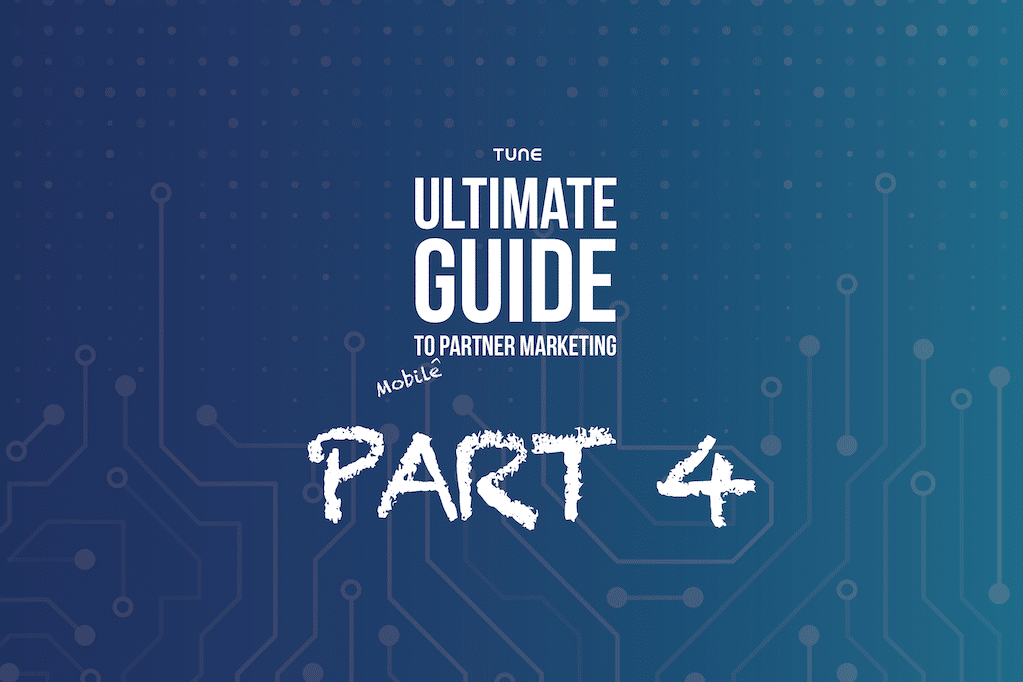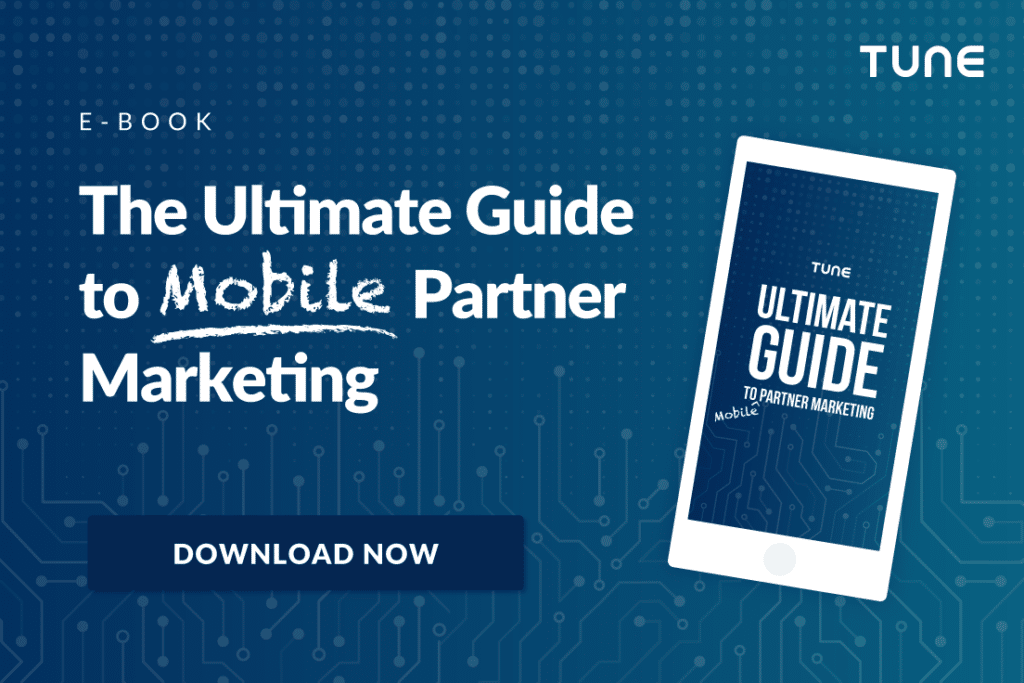
For digital marketers, understanding the intricacies of mobile web tracking is no longer a choice. Today, it’s a necessity to stay ahead of the curve in this fast-paced industry. That’s why we’re diving into mobile web tracking in Part 4 of our blog series, based on TUNE’s Ultimate Guide to Mobile Partner Marketing.
In Part 1, we introduced the guide and how mobile user acquisition and affiliate marketing programs overlap. Part 2 compared mobile measurement partners to partner marketing platforms. In Part 3, we explored why mobile apps are critical to a program’s success.
In this latest installment, we’re tackling the process behind tracking conversions on mobile web. After all, if you want to manage a successful partner marketing program, you have to be able to measure it first. So let’s get started!
How to Track Conversions in a Mobile Web Environment
For years, third-party cookies served as the go-to method for tracking conversions on the web. However, recent browser developments have rendered third-party cookies ineffective, pushing marketers to adopt cookieless tracking methods. This shift brings desktop and mobile web measurement closer to campaigns in the mobile app ecosystem, where cookieless tracking is a requirement.
For mobile web, there are two primary methodologies for cookieless tracking: server-side postbacks and JavaScript SDK. We’ll go into the basics of how these both work below.
Server-Side Postback Tracking
The server postback tracking method is the most reliable for tracking campaigns on mobile web. It has been TUNE’s recommended approach for years and is a native feature of the platform.
Let’s assume the implementation process has been completed, so all the required code and settings are ready. Here is how postback tracking works:
- When a user clicks on a tracking link, TUNE generates a unique alphanumeric ID (Transaction ID).
- TUNE passes the Transaction ID to the brand’s landing page, where it is stored and associated with the user.
- Brands can choose from several methods for storing the Transaction ID, including storing it in a database, using first-party cookies, or passing it via page URLs. Most developers should be familiar with this process and able to implement a solution.
- Upon the user’s conversion (e.g., purchase, lead capture), the brand fires the Transaction ID back to TUNE in a postback URL.
- TUNE leverages the stored information about the click to attribute the conversion accurately to the partner responsible for driving the conversion.
The first question about this process that many marketers ask is how to store the Transaction ID, which is answered in #2. The second question is how to pass the ID back to TUNE for Step #3. To do this, the brand makes an HTTP request to the postback URL via cURL (on the server side), which logs the conversion in TUNE.
JavaScript SDK Tracking
The JavaScript SDK method uses a web browser’s LocalStorage to get around the inaccuracies that come with third-party cookies. This method writes conversions back to TUNE, similar to postback tracking.
Here’s how JavaScript SDK tracking works:
- TUNE passes the Transaction ID into the browser’s LocalStorage upon the user’s click. This works with both redirect links and direct links.
- When implementing the JavaScript SDK, you add a snippet of code to the head of the website, an identify code line to the landing page, and a convert code line to the conversion page. This allows TUNE to store the Transaction ID on click in the web browser, and then send the ID back to the TUNE platform when the user ends up on a designated page.
- When the user reaches a conversion point (e.g., post-purchase Thank You page), TUNE accesses the Transaction ID stored in the browser and sends it back to the TUNE platform.
While this tracking methodology is set up using postback protocols, it is still considered client-side tracking, as the browser (not the brand) stores the Transaction ID.
The JavaScript SDK method is best for tracking in-session conversion points and removes the requirement for the brand to store the Transaction ID. It also integrates well with existing technologies, such as Google Analytics and Shopify, and can track and attribute organic traffic.
For more detailed explanations including flow charts and diagrams, download the Ultimate Guide to Mobile Partner Marketing.
Mobile Web Tracking and Privacy
Cookieless tracking methods like the ones above are designed to provide accurate attribution without compromising privacy. It’s a big reason TUNE has always advocated for server-side tracking solutions and first-party cookies versus third-party cookies. However, simply using these methodologies isn’t enough. It’s still crucial to maintain data security and privacy best practices in every aspect of your partner program, and to follow all applicable rules and regulations around data handling.
As tracking technologies advance, remember to always put consumer privacy first. A few simple steps that every marketer should follow include:
- Obtain user consent for tracking and data collection.
- Implement transparent privacy policies that clearly communicate tracking practices.
- Provide users with opt-out mechanisms for personalized tracking.
TUNE In to Learn More
Understanding how mobile web tracking works is essential for marketers seeking reliable conversion tracking methods in 2023. Using cookieless tracking enables today’s program managers to effectively track and attribute conversions in the mobile web environment.
However, it is equally important to prioritize user privacy and adhere to ethical tracking practices. At TUNE, we believe that by striking a balance between effective tracking and privacy considerations, marketers can achieve their program goals while building trust with partners and consumers. (Our customers are proof of that.)
Check back soon for Part 5, where we’ll delve into mobile app attribution and how MMPs operate. Can’t wait? Download the full e-book and get all your questions answered! You can also start a chat to ask one of our experts in person.
Happy reading!
Author
Becky is the Senior Content Marketing Manager at TUNE. Before TUNE, she handled content strategy and marketing communications at several tech startups in the Bay Area. Becky received her bachelor's degree in English from Wake Forest University. After a decade in San Francisco and Seattle, she has returned home to Charleston, SC, where you can find her strolling through Hampton Park with her pup and enjoying the simple things in life.




![The Road to Mobile Engagement [Infographic]](https://www.tune.com/wp-content/uploads/2018/11/cpi-cpa-applift-infographic-540x300.jpg)